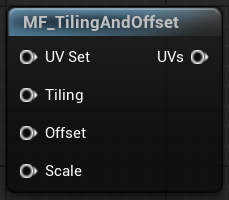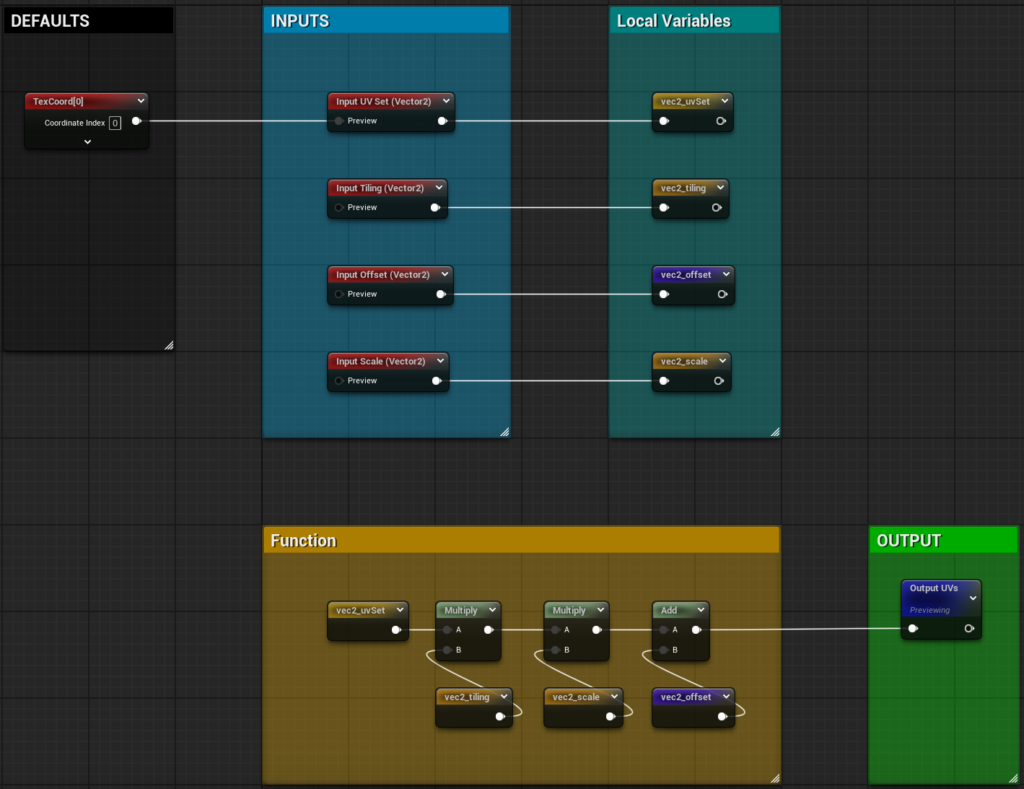Key Concepts:
Reusability

Material functions allow you to define a set of nodes that perform a specific task, such as calculating a texture coordinate transformation or applying a custom mathematical operation. Once created, you can reuse this material function in any material without needing to manually replicate the logic each time.
Modularity
By breaking down complex materials into smaller, modular components, you can manage and maintain your materials more easily. For example, instead of designing an entire shader graph with complex calculations for each material, you can build a set of functions for common tasks like creating custom lighting effects or generating procedural textures.
Performance
Material functions are a great way to reduce redundancy in your shaders, but they can also improve performance by grouping commonly used operations into a single unit, which can help with optimization at a lower level.
Isolated Workflow
Working on a multi-member team, you want to minimize blocking each other’s progress. Delineating your node graphs allows multiple people to work on separate parts of the material graph with minimal interference. One person can polish their stylized PBR calculations while another introduces a new effect.
Performance Optimizations
By grouping commonly used material functions into a single unit will minimize the number of times a calculation is called, thus reducing redundancy in your shaders which can improve performance.
Build Function Libraries
Common Functions


